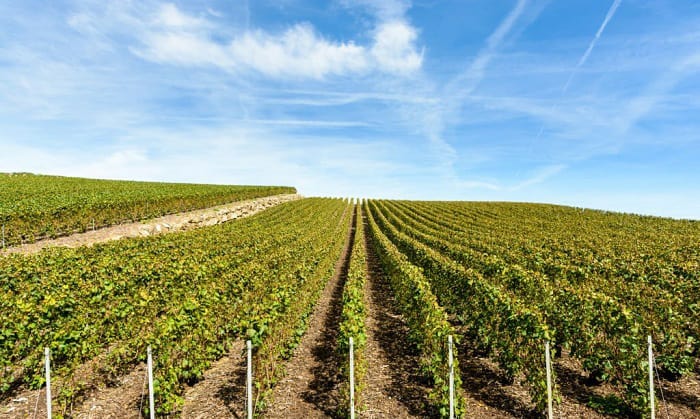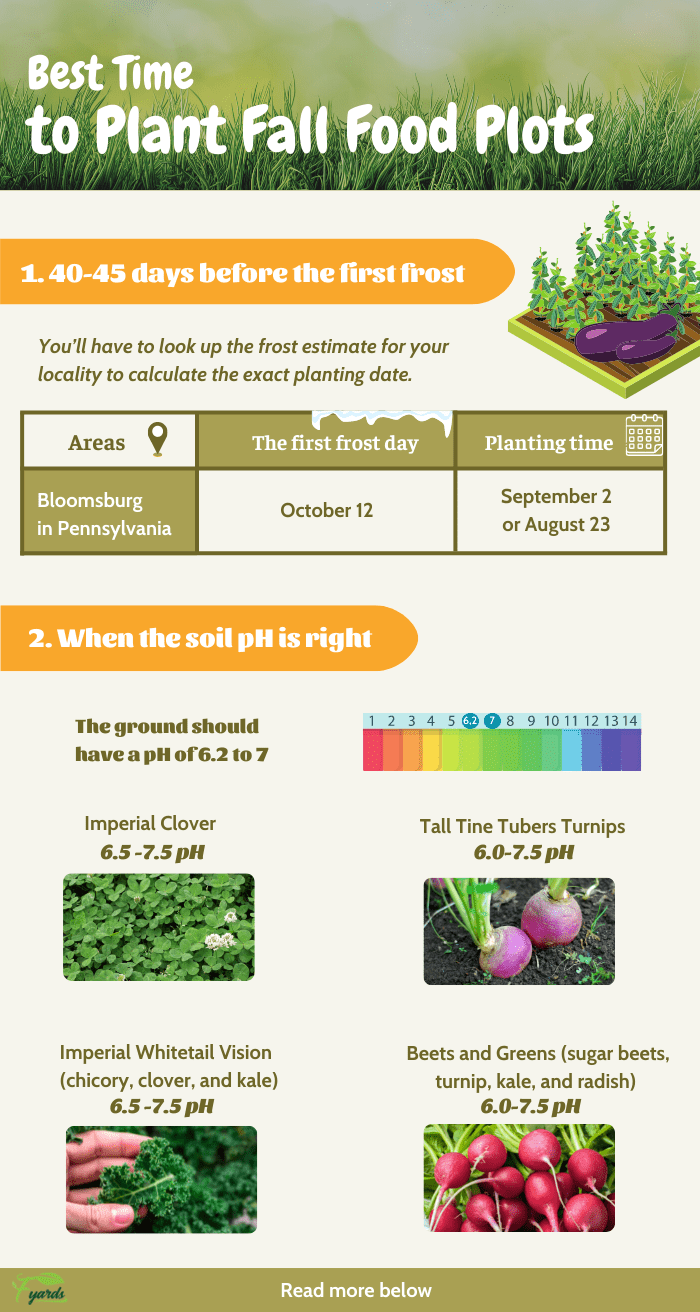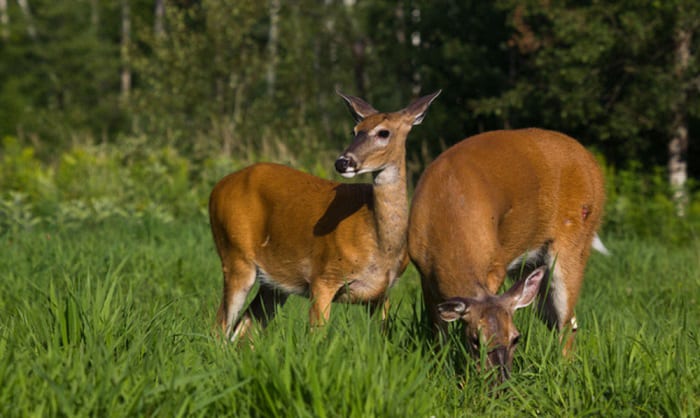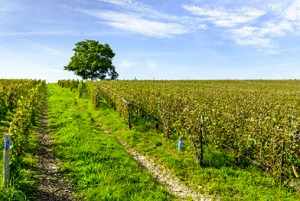If you want to observe or hunt wildlife animals, having food plots on your property is a nice thing to consider. After all, forage can provide sustenance to animals and attract them, all while increasing the value of your land.
So when to plant fall food plots? Do so forty to fifty days before the first frost to ensure they grow well and cater to the local wildlife.
Table of Contents
Best Time to Plant Fall Food Plots
1. Forty to fifty days before the first frost
As stated above, the optimal time for planting fall food plots is around one and a half months before the first fall frost.
Since cold weather arrives at different times across the United States, you’ll have to look up the frost estimate for your locality to calculate the exact planting date.
For example, because Bloomsburg in Pennsylvania has its first ice on October 12, residents here can start their food plots on September 2 or August 23.
2. When the soil pH is right
Aside from calculating the fall food plot planting dates, you should check the condition of your soil first before growing forage. In general, the ground should have a pH of 6.2 to 7, though it’s best to read your seed package for the recommended range.
Do this whether you’re using one crop type or a seed mix. For example, the following are all food plot seeds from Whitetail Institute, but with different plant types and pH requirements:
- Imperial Clover – 6.5 to 7.5 pH
- Tall Tine Tubers Turnips – 6.0 to 7.5 pH
- Imperial Whitetail Vision (chicory, clover, and kale) – 6.5 to 7.5
- Beets and Greens (sugar beets, turnip, kale, and radish) – 6.0 to 7.5
Tips for Growing Food Plots
Now that you know the food plot planting times, here are other things to keep in mind for successful gardening.
1. Location
When you plant food plot for deer, put it in close proximity to cover; otherwise, animals may be too scared to use it. The plot location should also have low erosion and be at least 50 feet away from woodlands if it houses non-grain crops.
Meanwhile, if you grow grains for cattle, make sure to provide winter cover within 660 feet of the plants.
2. Perennial grasses
Perennial grasses will not attract deer, unless no other forage is available. Here are some perennial turfs to avoid when creating your food plot. Among these, timothy and orchardgrass are the least appealing:
- Tall fescue
- Timothy grass
- Bluegrass
- Orchardgrass
3. Food plot plants for different wildlife species
Aside from deer, there are other animals you can build food plots for. For instance, you can grow a mix of alfalfa, red clover, chicory, and oats to attract bugs for wild turkeys. Mourning doves, meanwhile, will prefer buckwheat, millet, sesame, and sunflower seeds.
4. Plant rotation
If you plan to have a new food plot every year, don’t sow the same crop each time. Otherwise, you’ll increase the risk of plant disease and ruin the nutritional makeup of the soil.
FAQs
1. Can you plant deer food plots in fall?
Yes. You can plant deer food plots in the fall. Below are the months for doing so, grouped by regions:
-
- Northern areas (such as Ohio, Maine, and South Dakota) – in July to September
- Southern areas (including Mississippi, Texas, etc.) – in September to October
- Transition zones – in August or September
2. Is October too late to plant a food plot?
It depends on the first frost where you live. If you subtract 40 to 50 days from your first fall frost and the result is a date in October, you can start your food plot in that month.
To demonstrate, in Texas City, freezing weather won’t arrive until December 29, so not only can you grow forage here in October, but November would also be fine.
3. What kind of food plot can you plant in October?
When you plant winter food plots for deer, consider growing the following:
-
- Brassica like kale and radish
- Clover
- Alfalfa
- Cereal grains like wheat and rye
- Winter peas
These plants can all survive frost, as long as they’re sown at the right time. Moreover, they will provide sustenance for whitetail deer from winter through spring, and you can even find seed mixes with these listed crops.
Other plants you can try are standing corn and beans.
4. What are the best plants for my fall food plot?
Due to differences in climate, the ideal food plot plants will vary from one region to another. Below are the crop recommendations for different parts of the United States:
| Region | Plant(s) |
| Southern areas (in Arkansas, NC, Kentucky, in South Carolina, in Georgia, etc) | Wheat, rye, oat, triticale |
| Mid-Atlantic & Northeast areas (in Virginia, Vermont, NY, etc) | White clover (ladino or Durana) |
| Midwest and Western areas (in Missouri, Wisconsin, Alberta, Iowa, etc) | Brassicas, clover & chicory |
Conclusion
Hopefully, you now know when to plant fall food plots. Follow the tips above, and remember to remove weeds from the garden bed before planting. Try out different seed blends as well to pick the best one for your land.
If you do these things, your crops will have a higher chance of thriving. Happy gardening!

Hi, I am William – Floridayards’ digital content creator. My job is to find answers to all your concerns with thorough research and our team’s expert advice. I will also bring you honest reviews on the best products and equipment for raising your beautiful garden. Please look forward to our work!














